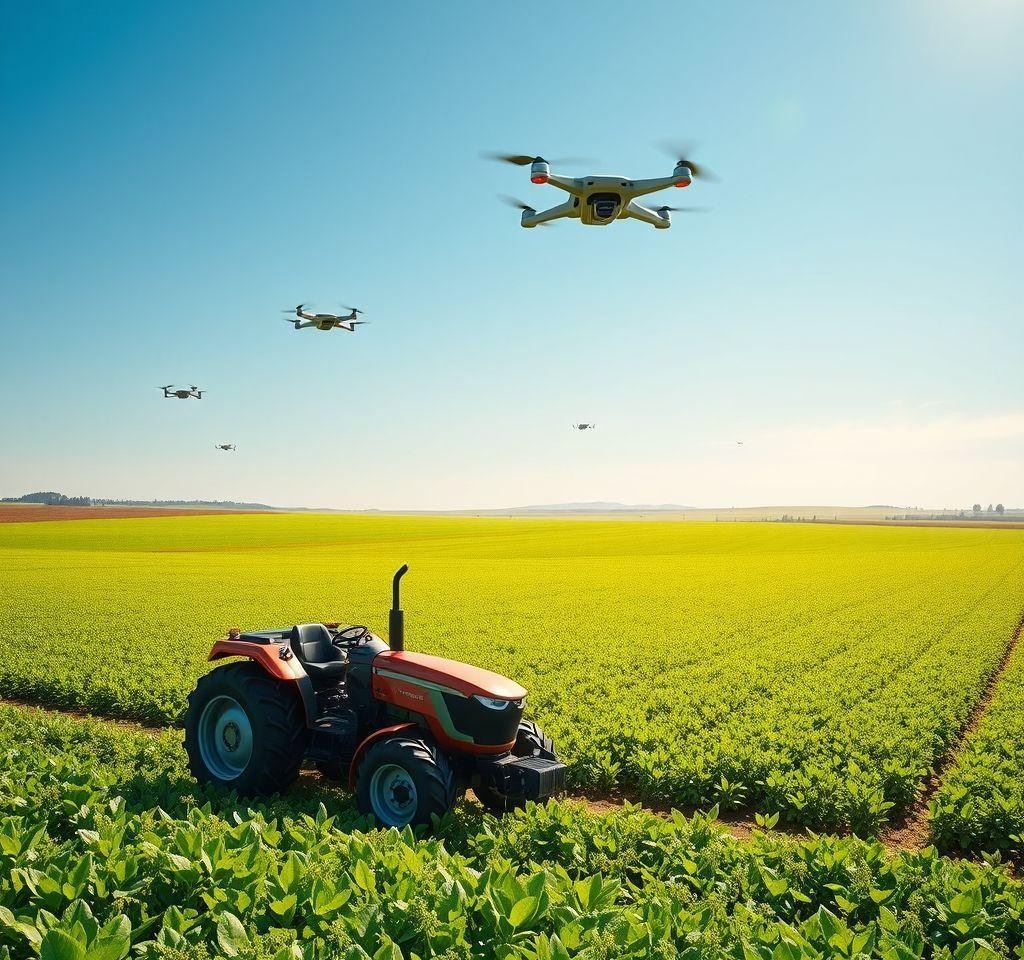Web 3.0 Reimagining Decentralized Finance
The convergence of Web 3.0 technologies with decentralized finance (DeFi) is catalyzing a financial revolution. By eliminating intermediaries and enabling programmable value exchange, this fusion is reshaping banking, asset management, and global economic participation. This article explores how blockchain’s decentralized architecture powers the next generation of financial systems.
Foundations of Web 3.0 and DeFi
Web 3.0 provides the infrastructure for DeFi’s decentralized operations. It ensures transparency and security. Blockchain technology is the base, enabling immutable and auditable transactions. Blockchain for data privacy is paramount. Decentralized identity solutions give users control over their data. Token economics align incentives within DeFi platforms. These mechanisms promote participation and stability.
Smart contracts are the backbone of DeFi applications. They automate agreements without intermediaries. DApps offer user-friendly interfaces to interact with these contracts. Smart contracts evolution is continuous. Yield farming leverages these components. It allows users to earn rewards for providing liquidity.
Protocol layers in Web 3.0 and DeFi are interdependent. Changes in one layer can affect others. For example, a blockchain upgrade impacts all DApps built on it. Security vulnerabilities in smart contracts can lead to significant losses. Understanding these interdependencies is crucial for developers. It is also important for users to navigate the DeFi landscape. DeFi innovations future finance is promising.
Architectural Innovations
Web 3.0 provides the infrastructure for DeFi’s decentralized operations. It ensures transparency and security. Blockchain technology is the base, enabling immutable and auditable transactions. Blockchain for data privacy is paramount. Decentralized identity solutions give users control over their data. Token economics align incentives within DeFi platforms. These mechanisms promote participation and stability.
Smart contracts are the backbone of DeFi applications. They automate agreements without intermediaries. DApps offer user-friendly interfaces to interact with these contracts. Smart contracts evolution is continuous. Yield farming leverages these components. It allows users to earn rewards for providing liquidity.
Protocol layers in Web 3.0 and DeFi are interdependent. Changes in one layer can affect others. For example, a blockchain upgrade impacts all DApps built on it. Security vulnerabilities in smart contracts can lead to significant losses. Understanding these interdependencies is crucial for developers. It is also important for users to navigate the DeFi landscape. DeFi innovations future finance is promising.
Economic Paradigms
Web 3.0 provides the infrastructure for DeFi’s decentralized operations. It ensures transparency and security. Blockchain technology is the base, enabling immutable and auditable transactions. Blockchain for data privacy is paramount. Decentralized identity solutions give users control over their data. Token economics align incentives within DeFi platforms. These mechanisms promote participation and stability.
Smart contracts are the backbone of DeFi applications. They automate agreements without intermediaries. DApps offer user-friendly interfaces to interact with these contracts. Smart contracts evolution is continuous. Yield farming leverages these components. It allows users to earn rewards for providing liquidity.
Protocol layers in Web 3.0 and DeFi are interdependent. Changes in one layer can affect others. For example, a blockchain upgrade impacts all DApps built on it. Security vulnerabilities in smart contracts can lead to significant losses. Understanding these interdependencies is crucial for developers. It is also important for users to navigate the DeFi landscape. DeFi innovations future finance is promising.
Security & Risks
Web 3.0 provides the infrastructure for DeFi’s decentralized operations. It ensures transparency and security. Blockchain technology is the base, enabling immutable and auditable transactions. Blockchain for data privacy is paramount. Decentralized identity solutions give users control over their data. Token economics align incentives within DeFi platforms. These mechanisms promote participation and stability.
Smart contracts are the backbone of DeFi applications. They automate agreements without intermediaries. DApps offer user-friendly interfaces to interact with these contracts. Smart contracts evolution is continuous. Yield farming leverages these components. It allows users to earn rewards for providing liquidity.
Protocol layers in Web 3.0 and DeFi are interdependent. Changes in one layer can affect others. For example, a blockchain upgrade impacts all DApps built on it. Security vulnerabilities in smart contracts can lead to significant losses. Understanding these interdependencies is crucial for developers. It is also important for users to navigate the DeFi landscape. DeFi innovations future finance is promising.
Future Trajectories
Web 3.0 provides the infrastructure for DeFi’s decentralized operations. It ensures transparency and security. Blockchain technology is the base, enabling immutable and auditable transactions. Blockchain for data privacy is paramount. Decentralized identity solutions give users control over their data. Token economics align incentives within DeFi platforms. These mechanisms promote participation and stability.
Smart contracts are the backbone of DeFi applications. They automate agreements without intermediaries. DApps offer user-friendly interfaces to interact with these contracts. Smart contracts evolution is continuous. Yield farming leverages these components. It allows users to earn rewards for providing liquidity.
Protocol layers in Web 3.0 and DeFi are interdependent. Changes in one layer can affect others. For example, a blockchain upgrade impacts all DApps built on it. Security vulnerabilities in smart contracts can lead to significant losses. Understanding these interdependencies is crucial for developers. It is also important for users to navigate the DeFi landscape. DeFi innovations future finance is promising.
Foundations of Web 3.0 and DeFi
Web 3.0 enhances DeFi scalability through architectural innovations. Decentralized exchanges (DEXs) enable peer-to-peer trading. They reduce reliance on centralized intermediaries. Oracles provide real-world data to smart contracts. This data powers complex financial instruments. Cross-chain interoperability solutions connect different blockchains. They facilitate asset transfers and collaboration. Zero-knowledge proofs enhance privacy. They allow verification of transactions without revealing sensitive data.
- Decentralized Exchanges (DEXs): Automated market makers (AMMs), order book models.
- Oracles: Data feeds for price, events, and external information.
- Cross-Chain Interoperability: Bridge protocols, atomic swaps.
- Zero-Knowledge Proofs: zk-SNARKs, zk-STARKs for transaction privacy.
Technical advancements in these areas are crucial. They address scalability and privacy limitations. Blockchain interoperability solutions are key. They enable seamless interaction between different DeFi protocols. Blockchain interoperability solutions are constantly evolving. These innovations pave the way for broader DeFi adoption. They also foster a more interconnected and efficient financial ecosystem.
Architectural Innovations
Web 3.0 enhances DeFi scalability through architectural innovations. Decentralized exchanges (DEXs) enable peer-to-peer trading. They reduce reliance on centralized intermediaries. Oracles provide real-world data to smart contracts. This data powers complex financial instruments. Cross-chain interoperability solutions connect different blockchains. They facilitate asset transfers and collaboration. Zero-knowledge proofs enhance privacy. They allow verification of transactions without revealing sensitive data.
- Decentralized Exchanges (DEXs): Automated market makers (AMMs), order book models.
- Oracles: Data feeds for price, events, and external information.
- Cross-Chain Interoperability: Bridge protocols, atomic swaps.
- Zero-Knowledge Proofs: zk-SNARKs, zk-STARKs for transaction privacy.
Technical advancements in these areas are crucial. They address scalability and privacy limitations. Blockchain interoperability solutions are key. They enable seamless interaction between different DeFi protocols. Blockchain interoperability solutions are constantly evolving. These innovations pave the way for broader DeFi adoption. They also foster a more interconnected and efficient financial ecosystem.
Economic Paradigms
Web 3.0 enhances DeFi scalability through architectural innovations. Decentralized exchanges (DEXs) enable peer-to-peer trading. They reduce reliance on centralized intermediaries. Oracles provide real-world data to smart contracts. This data powers complex financial instruments. Cross-chain interoperability solutions connect different blockchains. They facilitate asset transfers and collaboration. Zero-knowledge proofs enhance privacy. They allow verification of transactions without revealing sensitive data.
- Decentralized Exchanges (DEXs): Automated market makers (AMMs), order book models.
- Oracles: Data feeds for price, events, and external information.
- Cross-Chain Interoperability: Bridge protocols, atomic swaps.
- Zero-Knowledge Proofs: zk-SNARKs, zk-STARKs for transaction privacy.
Technical advancements in these areas are crucial. They address scalability and privacy limitations. Blockchain interoperability solutions are key. They enable seamless interaction between different DeFi protocols. Blockchain interoperability solutions are constantly evolving. These innovations pave the way for broader DeFi adoption. They also foster a more interconnected and efficient financial ecosystem.
Security & Risks
Web 3.0 enhances DeFi scalability through architectural innovations. Decentralized exchanges (DEXs) enable peer-to-peer trading. They reduce reliance on centralized intermediaries. Oracles provide real-world data to smart contracts. This data powers complex financial instruments. Cross-chain interoperability solutions connect different blockchains. They facilitate asset transfers and collaboration. Zero-knowledge proofs enhance privacy. They allow verification of transactions without revealing sensitive data.
- Decentralized Exchanges (DEXs): Automated market makers (AMMs), order book models.
- Oracles: Data feeds for price, events, and external information.
- Cross-Chain Interoperability: Bridge protocols, atomic swaps.
- Zero-Knowledge Proofs: zk-SNARKs, zk-STARKs for transaction privacy.
Technical advancements in these areas are crucial. They address scalability and privacy limitations. Blockchain interoperability solutions are key. They enable seamless interaction between different DeFi protocols. Blockchain interoperability solutions are constantly evolving. These innovations pave the way for broader DeFi adoption. They also foster a more interconnected and efficient financial ecosystem.
Future Trajectories
Web 3.0 enhances DeFi scalability through architectural innovations. Decentralized exchanges (DEXs) enable peer-to-peer trading. They reduce reliance on centralized intermediaries. Oracles provide real-world data to smart contracts. This data powers complex financial instruments. Cross-chain interoperability solutions connect different blockchains. They facilitate asset transfers and collaboration. Zero-knowledge proofs enhance privacy. They allow verification of transactions without revealing sensitive data.
- Decentralized Exchanges (DEXs): Automated market makers (AMMs), order book models.
- Oracles: Data feeds for price, events, and external information.
- Cross-Chain Interoperability: Bridge protocols, atomic swaps.
- Zero-Knowledge Proofs: zk-SNARKs, zk-STARKs for transaction privacy.
Technical advancements in these areas are crucial. They address scalability and privacy limitations. Blockchain interoperability solutions are key. They enable seamless interaction between different DeFi protocols. Blockchain interoperability solutions are constantly evolving. These innovations pave the way for broader DeFi adoption. They also foster a more interconnected and efficient financial ecosystem.
Foundations of Web 3.0 and DeFi
Web 3.0 tokenomics reshape DeFi ecosystems. Governance tokens empower users. They allow participation in decision-making. Staking mechanisms incentivize network security. Users earn rewards for locking up their tokens. Incentive models promote liquidity and usage. They attract participants to DeFi platforms.
In contrast, traditional financial systems rely on centralized control. Corporate governance is top-down. Monetary policy is set by central banks. Incentives are often misaligned. They benefit intermediaries more than users.
DeFi tokenomics aim for fairer distribution. They seek to align incentives. This contrasts with the rent-seeking behavior in traditional finance. Regulatory frameworks in DeFi are still evolving. However, the potential for economic empowerment is significant. The shift towards user-centric models marks a fundamental change. It challenges established financial norms. Web 3.0 creators earning without middlemen is a key aspect of this shift.
Architectural Innovations
Web 3.0 tokenomics reshape DeFi ecosystems. Governance tokens empower users. They allow participation in decision-making. Staking mechanisms incentivize network security. Users earn rewards for locking up their tokens. Incentive models promote liquidity and usage. They attract participants to DeFi platforms.
In contrast, traditional financial systems rely on centralized control. Corporate governance is top-down. Monetary policy is set by central banks. Incentives are often misaligned. They benefit intermediaries more than users.
DeFi tokenomics aim for fairer distribution. They seek to align incentives. This contrasts with the rent-seeking behavior in traditional finance. Regulatory frameworks in DeFi are still evolving. However, the potential for economic empowerment is significant. The shift towards user-centric models marks a fundamental change. It challenges established financial norms. Web 3.0 creators earning without middlemen is a key aspect of this shift.
Economic Paradigms
Web 3.0 tokenomics reshape DeFi ecosystems. Governance tokens empower users. They allow participation in decision-making. Staking mechanisms incentivize network security. Users earn rewards for locking up their tokens. Incentive models promote liquidity and usage. They attract participants to DeFi platforms.
In contrast, traditional financial systems rely on centralized control. Corporate governance is top-down. Monetary policy is set by central banks. Incentives are often misaligned. They benefit intermediaries more than users.
DeFi tokenomics aim for fairer distribution. They seek to align incentives. This contrasts with the rent-seeking behavior in traditional finance. Regulatory frameworks in DeFi are still evolving. However, the potential for economic empowerment is significant. The shift towards user-centric models marks a fundamental change. It challenges established financial norms. Web 3.0 creators earning without middlemen is a key aspect of this shift.
Security & Risks
Web 3.0 tokenomics reshape DeFi ecosystems. Governance tokens empower users. They allow participation in decision-making. Staking mechanisms incentivize network security. Users earn rewards for locking up their tokens. Incentive models promote liquidity and usage. They attract participants to DeFi platforms.
In contrast, traditional financial systems rely on centralized control. Corporate governance is top-down. Monetary policy is set by central banks. Incentives are often misaligned. They benefit intermediaries more than users.
DeFi tokenomics aim for fairer distribution. They seek to align incentives. This contrasts with the rent-seeking behavior in traditional finance. Regulatory frameworks in DeFi are still evolving. However, the potential for economic empowerment is significant. The shift towards user-centric models marks a fundamental change. It challenges established financial norms. Web 3.0 creators earning without middlemen is a key aspect of this shift.
Future Trajectories
Web 3.0 tokenomics reshape DeFi ecosystems. Governance tokens empower users. They allow participation in decision-making. Staking mechanisms incentivize network security. Users earn rewards for locking up their tokens. Incentive models promote liquidity and usage. They attract participants to DeFi platforms.
In contrast, traditional financial systems rely on centralized control. Corporate governance is top-down. Monetary policy is set by central banks. Incentives are often misaligned. They benefit intermediaries more than users.
DeFi tokenomics aim for fairer distribution. They seek to align incentives. This contrasts with the rent-seeking behavior in traditional finance. Regulatory frameworks in DeFi are still evolving. However, the potential for economic empowerment is significant. The shift towards user-centric models marks a fundamental change. It challenges established financial norms. Web 3.0 creators earning without middlemen is a key aspect of this shift.
Foundations of Web 3.0 and DeFi
Web 3.0 and DeFi face significant security challenges. Smart contract vulnerabilities pose a major risk. Reentrancy attacks can drain funds from contracts. Overflow attacks can cause unexpected behavior. 51% attacks threaten blockchain consensus. Regulatory uncertainty adds another layer of complexity.
Formal verification tools can enhance smart contract security. They mathematically prove the correctness of code. Layer-2 scaling solutions improve transaction throughput. They reduce the attack surface on the main chain. Diversifying consensus mechanisms can mitigate 51% attacks. Clear regulatory guidelines are essential for fostering trust. They also promote responsible innovation.
Addressing these risks is critical for DeFi’s long-term viability. A multi-faceted approach is necessary. It should combine technical solutions with regulatory clarity. Continuous monitoring and auditing are also important. AI cybersecurity defense mechanisms can play a role. Collaboration between developers, regulators, and users is key. This will ensure a safer and more robust DeFi ecosystem.
Architectural Innovations
Web 3.0 and DeFi face significant security challenges. Smart contract vulnerabilities pose a major risk. Reentrancy attacks can drain funds from contracts. Overflow attacks can cause unexpected behavior. 51% attacks threaten blockchain consensus. Regulatory uncertainty adds another layer of complexity.
Formal verification tools can enhance smart contract security. They mathematically prove the correctness of code. Layer-2 scaling solutions improve transaction throughput. They reduce the attack surface on the main chain. Diversifying consensus mechanisms can mitigate 51% attacks. Clear regulatory guidelines are essential for fostering trust. They also promote responsible innovation.
Addressing these risks is critical for DeFi’s long-term viability. A multi-faceted approach is necessary. It should combine technical solutions with regulatory clarity. Continuous monitoring and auditing are also important. AI cybersecurity defense mechanisms can play a role. Collaboration between developers, regulators, and users is key. This will ensure a safer and more robust DeFi ecosystem.
Economic Paradigms
Web 3.0 and DeFi face significant security challenges. Smart contract vulnerabilities pose a major risk. Reentrancy attacks can drain funds from contracts. Overflow attacks can cause unexpected behavior. 51% attacks threaten blockchain consensus. Regulatory uncertainty adds another layer of complexity.
Formal verification tools can enhance smart contract security. They mathematically prove the correctness of code. Layer-2 scaling solutions improve transaction throughput. They reduce the attack surface on the main chain. Diversifying consensus mechanisms can mitigate 51% attacks. Clear regulatory guidelines are essential for fostering trust. They also promote responsible innovation.
Addressing these risks is critical for DeFi’s long-term viability. A multi-faceted approach is necessary. It should combine technical solutions with regulatory clarity. Continuous monitoring and auditing are also important. AI cybersecurity defense mechanisms can play a role. Collaboration between developers, regulators, and users is key. This will ensure a safer and more robust DeFi ecosystem.
Security & Risks
Web 3.0 and DeFi face significant security challenges. Smart contract vulnerabilities pose a major risk. Reentrancy attacks can drain funds from contracts. Overflow attacks can cause unexpected behavior. 51% attacks threaten blockchain consensus. Regulatory uncertainty adds another layer of complexity.
Formal verification tools can enhance smart contract security. They mathematically prove the correctness of code. Layer-2 scaling solutions improve transaction throughput. They reduce the attack surface on the main chain. Diversifying consensus mechanisms can mitigate 51% attacks. Clear regulatory guidelines are essential for fostering trust. They also promote responsible innovation.
Addressing these risks is critical for DeFi’s long-term viability. A multi-faceted approach is necessary. It should combine technical solutions with regulatory clarity. Continuous monitoring and auditing are also important. AI cybersecurity defense mechanisms can play a role. Collaboration between developers, regulators, and users is key. This will ensure a safer and more robust DeFi ecosystem.
Future Trajectories
Web 3.0 and DeFi face significant security challenges. Smart contract vulnerabilities pose a major risk. Reentrancy attacks can drain funds from contracts. Overflow attacks can cause unexpected behavior. 51% attacks threaten blockchain consensus. Regulatory uncertainty adds another layer of complexity.
Formal verification tools can enhance smart contract security. They mathematically prove the correctness of code. Layer-2 scaling solutions improve transaction throughput. They reduce the attack surface on the main chain. Diversifying consensus mechanisms can mitigate 51% attacks. Clear regulatory guidelines are essential for fostering trust. They also promote responsible innovation.
Addressing these risks is critical for DeFi’s long-term viability. A multi-faceted approach is necessary. It should combine technical solutions with regulatory clarity. Continuous monitoring and auditing are also important. AI cybersecurity defense mechanisms can play a role. Collaboration between developers, regulators, and users is key. This will ensure a safer and more robust DeFi ecosystem.
Foundations of Web 3.0 and DeFi
Web 3.0 is set to transform DeFi further. Central bank digital currencies (CBDCs) may integrate with DeFi rails. This could enhance efficiency and accessibility. Decentralized autonomous organizations (DAOs) might become standard institutional structures. They would govern DeFi protocols and manage assets. AI-driven DeFi protocols could optimize trading. They could also automate risk management.
By 2030, we project a highly interconnected ecosystem. CBDCs will seamlessly interact with DeFi protocols. DAOs will manage trillions in assets. AI will autonomously manage portfolios. This future requires careful consideration. It also demands proactive development.
These trends present opportunities and challenges. Regulatory clarity will be essential. Robust security measures must be in place. Ethical considerations around AI need addressing. AI ethics, bias, regulation, responsible use is critical. Navigating these complexities will shape the future of DeFi. It will also determine its role in the global financial system.
Architectural Innovations
Web 3.0 is set to transform DeFi further. Central bank digital currencies (CBDCs) may integrate with DeFi rails. This could enhance efficiency and accessibility. Decentralized autonomous organizations (DAOs) might become standard institutional structures. They would govern DeFi protocols and manage assets. AI-driven DeFi protocols could optimize trading. They could also automate risk management.
By 2030, we project a highly interconnected ecosystem. CBDCs will seamlessly interact with DeFi protocols. DAOs will manage trillions in assets. AI will autonomously manage portfolios. This future requires careful consideration. It also demands proactive development.
These trends present opportunities and challenges. Regulatory clarity will be essential. Robust security measures must be in place. Ethical considerations around AI need addressing. AI ethics, bias, regulation, responsible use is critical. Navigating these complexities will shape the future of DeFi. It will also determine its role in the global financial system.
Economic Paradigms
Web 3.0 is set to transform DeFi further. Central bank digital currencies (CBDCs) may integrate with DeFi rails. This could enhance efficiency and accessibility. Decentralized autonomous organizations (DAOs) might become standard institutional structures. They would govern DeFi protocols and manage assets. AI-driven DeFi protocols could optimize trading. They could also automate risk management.
By 2030, we project a highly interconnected ecosystem. CBDCs will seamlessly interact with DeFi protocols. DAOs will manage trillions in assets. AI will autonomously manage portfolios. This future requires careful consideration. It also demands proactive development.
These trends present opportunities and challenges. Regulatory clarity will be essential. Robust security measures must be in place. Ethical considerations around AI need addressing. AI ethics, bias, regulation, responsible use is critical. Navigating these complexities will shape the future of DeFi. It will also determine its role in the global financial system.
Security & Risks
Web 3.0 is set to transform DeFi further. Central bank digital currencies (CBDCs) may integrate with DeFi rails. This could enhance efficiency and accessibility. Decentralized autonomous organizations (DAOs) might become standard institutional structures. They would govern DeFi protocols and manage assets. AI-driven DeFi protocols could optimize trading. They could also automate risk management.
By 2030, we project a highly interconnected ecosystem. CBDCs will seamlessly interact with DeFi protocols. DAOs will manage trillions in assets. AI will autonomously manage portfolios. This future requires careful consideration. It also demands proactive development.
These trends present opportunities and challenges. Regulatory clarity will be essential. Robust security measures must be in place. Ethical considerations around AI need addressing. AI ethics, bias, regulation, responsible use is critical. Navigating these complexities will shape the future of DeFi. It will also determine its role in the global financial system.
Future Trajectories
Web 3.0 is set to transform DeFi further. Central bank digital currencies (CBDCs) may integrate with DeFi rails. This could enhance efficiency and accessibility. Decentralized autonomous organizations (DAOs) might become standard institutional structures. They would govern DeFi protocols and manage assets. AI-driven DeFi protocols could optimize trading. They could also automate risk management.
By 2030, we project a highly interconnected ecosystem. CBDCs will seamlessly interact with DeFi protocols. DAOs will manage trillions in assets. AI will autonomously manage portfolios. This future requires careful consideration. It also demands proactive development.
These trends present opportunities and challenges. Regulatory clarity will be essential. Robust security measures must be in place. Ethical considerations around AI need addressing. AI ethics, bias, regulation, responsible use is critical. Navigating these complexities will shape the future of DeFi. It will also determine its role in the global financial system.
Final Words
Web 3.0 provides the foundational architecture enabling DeFi’s decentralization, transparency, and global accessibility. While challenges like regulatory uncertainty and security risks remain, the integration of smart contracts, interoperable protocols, and community governance signals an irreversible shift toward permissionless financial systems. Stakeholders must adopt these technologies to remain competitive in the digital economy.




